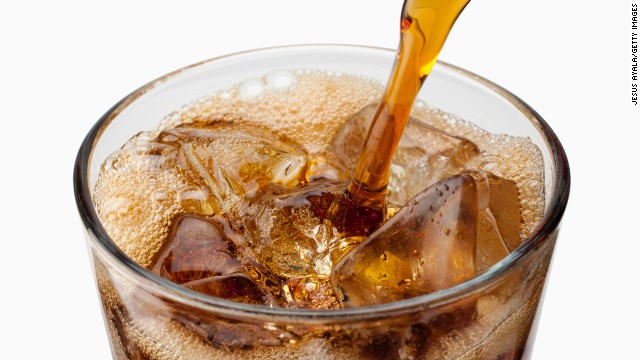Reducing or even totally eliminating soft drinks from your diet is a quick way to improve your health and lose weight. But there’s nothing new there, right? What makes it so hard is the real question.
According to Gary Wenk, director of neuroscience undergraduate programs at the Ohio State University and author of “Your Brain on Food,” it’s all in the beverage’s formula. Your favorite brand of soft drink is engineered with just the right amount of sweetener, caffeine and carbonation to make you continuously want to grab and gulp.
The sugar factor acts better than drugs
Consider the fact that a 12-ounce can of Coca-Cola has a whopping 39 grams of sugar — that’s equivalent to about 10 teaspoons, and more than we should consume in an entire day.
But that rush of sweetness also appears to activate the same reward centers in the brain as drugs, Wenk explained. It triggers the release of the brain chemical dopamine in a region known as the nucleus accumbens, and as a result we feel euphoria.
“The sugar in the drinks … swish through the brain, you get the dopamine rewarding you, and then the effect of the dopamine surge is gone almost as fast as it arrived, leaving your brain wanting more,”
Wenk said.
In fact, one review concluded that sugar can even be more rewarding and attractive than cocaine.
But satisfying that desire for more sugar can lead to larger cravings.
It also gives a great caffeine kick
Sugar isn’t the only ingredient that makes soda so addictive. There’s also caffeine, which is aone of the most widely consumed psychosyimulants – “and our brain craves things that stimulate it,” he continued. Caffeine not only speeds up our thinking but also has its own unique ability to activate reward pathways that involve dopamine, according to Wenk.
Diet soda is just as unhealthy and addictive
Although diet sodas replace real sugar with artificial sweeteners, those may have their own addictive characteristics. According to Msora-Kasago, they trigger taste receptors that register the sweetness and expect sugar, essentially preparing the brain for a reward that never comes.
And when “the brain doesn’t get the reward it wants from its drink — the real sugar — it says, ‘go out and get me some more,’ ” Wenk said.
And, as with regular soda, the carbonation compounds the effect of artificial sweeteners — dulling the taste just enough to intensify our cravings and have us cracking open another can.
Rituals and genes
But why can some people stop at just one a soda every now and then and other develop a habit? This may have to do with some of the ritual aspects of soda drinking, which also play a role in our brain’s chemistry. Everything from hearing the pop and the fizz of the carbonation to seeing the words “diet” written on a can – an aspect of reward in itself for engaging in what is perhaps considered a “virtuous” behavior – can increase the activity of dopamine cells.
Diet soda in particular may become habit-forming when it’s seen as the “healthier” choice. For example, it’s common to replace a regular soda habit with diet soda, which reduces calorie intake without giving up the actual soda habit, Msora-Kasago explained.
And at least one study suggests that there may be genetic underpinnings related to our desire to consume sweet beverages. In the study, people who had a variant in a gene known as FTO – which has previously been linked to a lower risk of obesity — surprisingly had an affinity for sweetened beverages.
“People with this FTO variant are more likely to drink more soda,” explained Cornelis, who co-authored the study. Though the link to lower obesity risk is counterintuitive, it is “a similar trend observed by other scientists” and something researchers are still trying to understand, according to Cornelis. About 20 to 30% of the population has the genetic variant.
Source: cnn.com










